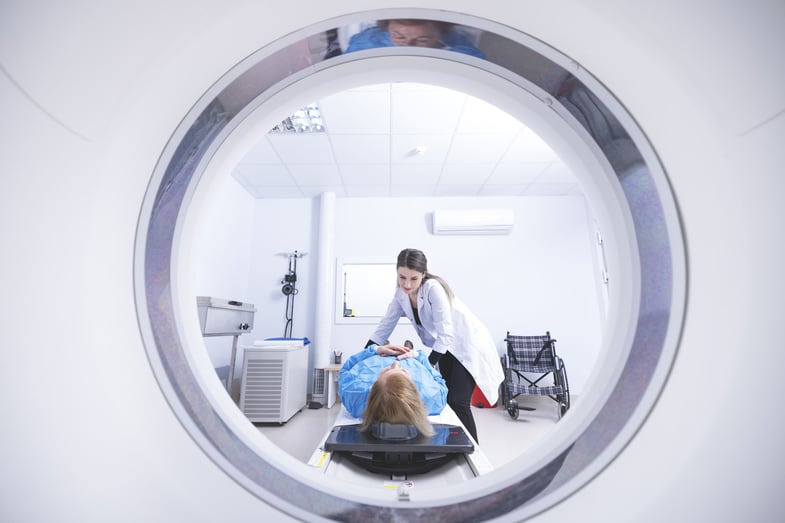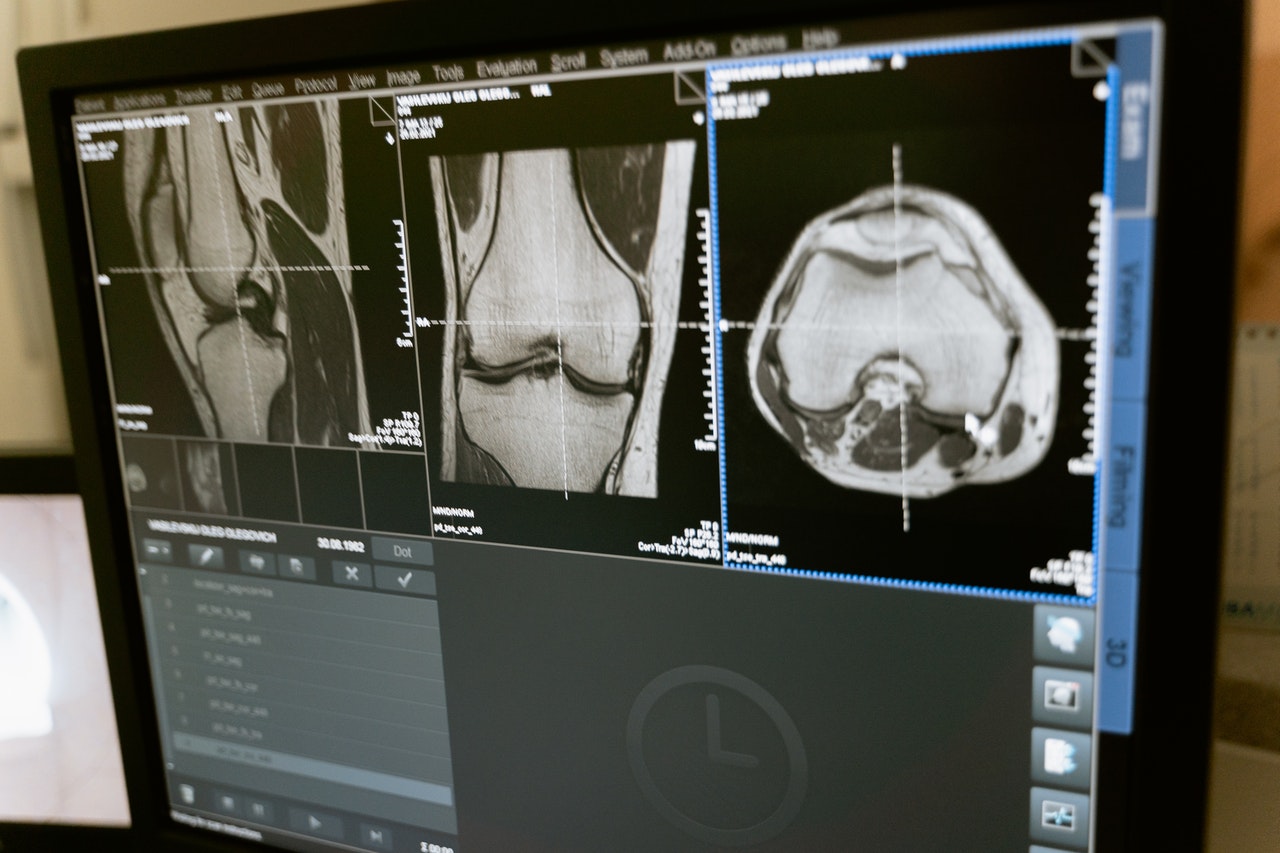 A lot of times when we think of radiology, the first thing we think of is an X-ray. Or someone who takes a picture of our insides to tell us what the heck is going on in there. But radiology isn't just about scans and image. Although there's a lot more than meets the eye in this profession, so let's get the whole picture.
A lot of times when we think of radiology, the first thing we think of is an X-ray. Or someone who takes a picture of our insides to tell us what the heck is going on in there. But radiology isn't just about scans and image. Although there's a lot more than meets the eye in this profession, so let's get the whole picture.
The Importance of Radiology in Healthcare
Let's start from the top. What is radiology? Radiology is the main diagnostic tool for a wide variety of diseases and illnesses. Without radiology, we'd have a hard time diagnosing what's wrong with a patient and how to best treat them. This increased range of diagnostics combined with improved image clarity have made diagnosing more effective more than ever. Hooray, technology!
Wait, there's more than one kind of radiology?
Let's start from the top with the basics. There are a few different types of radiology you should know about, especially if you're an aspiring medical traveler interested in professional medical imaging.
First, there's diagnostic radiology. As the name suggests, diagnostic radiology are imaging studies used to diagnose diseases and conditions. You've probably heard of this type of radiology with technology like MRIs, X-rays, ultrasounds, CT scans, and barium studies.
Then there's interventional radiology. These are guided by imaging used to correct an underlying disease or condition. This type of radiology is used for a bunch of different reasons, like for:
- Inserting filters into the veins to block blood clots
- Testing biopsies of organs and tissue
- Treating uterine fibroids by blocking blood vessels (embolization)
- Fractured spine treatments and injections
- Cardiac arrythmia and pacemakers
- Angioplasty
- Coronary artery stenting
Additionally, radiation oncology is another type of radiology. As you may have guessed, this type specifically treats cancer in patients using radiation. Within this field, techs work with high doses of radiation to shrink patient tumors through a series of visits for short intervals.
But the fun doesn't stop there! If you dig even deeper within diagnostic and interventional radiology, you'll find sub-specialties. And once you take a peek at these top sub-specialties, you'll know what we mean when we say radiology is really rad.
 Have you ever heard of nuclear medicine? No? Well, this sub-specialty provides images through a process that includes small amounts of radionuclides. You know, images like PET and SPECT scans.
Have you ever heard of nuclear medicine? No? Well, this sub-specialty provides images through a process that includes small amounts of radionuclides. You know, images like PET and SPECT scans.

Neuroradiology (try saying that five times fast) works to diagnose and treat brain, sinus, spine, neck, and central nervous system diseases related to aging and degenerative disease, seizures, strokes, cancers, cerebrovascular diseases, and other trauma. This imaging technique commonly includes angiography, myelography, and MRIs.

Vascular and interventional radiology work to diagnose and treat diseases using various imaging technologies. This approach includes fluoroscopy, MRI, CT, and sonography. Some of the therapies include embolization, angioplasty, stent placement, and thrombolysis.
Kiddos have their own radiology professional who specializes in pediatric radiology. This imaging is related to diagnosing, caring for, and managing congenital abnormalities and infant/child-specific diseases.
Which specialty will you choose when you become a badass radiologist? Decisions, decisions.

Even more about imaging...
Now that you have a better idea of what radiology is and the different types of radiologists, you should know what these diagnostic tests look for. Luckily, the University of Virginia health system created a helpful infographic explaining the different types of imaging tests and what they are used for. To make it easy on you, we combined what we learned:
- You know X-rays? Well, those take an average of 10 to 15 minutes to complete. X-rays take images of bones and foreign objects in tissue, plus diagnose fractured bones, infections, breast cancer, arthritis, osteoporosis, gastrointestinal issues, bone cancer, and more.
- CT scans take an average of 10 minutes and capture image slices of bone, as well as tissue and blood vessels, to assess cancers and emergency situations. Common conditions diagnosed by CT scan are trauma-related injuries, brain injuries, infections, lung cancer, tumors, stroke, and vascular diseases.
- MRIs are about 45 minutes to an hour-long. MRIs are helpful to diagnose multiple sclerosis (MS), internal bleeding, tendon injuries, joint issues, prostate cancer, female pelvic issues, dementia, and tumors.
- We all know ultrasounds, right? They take anywhere between 30 minutes and an hour and create pictures of soft tissue and blood flow, plus their movements. Common conditions that use ultrasounds are heart attack causes, heart disease, biopsy guidance, prenatal issues, blood clots, and blood flow issues.
- Pet scans? No, PET scans! This technology takes an average of one-and-a-half to two hours and capture organ and tissue activity. Some common conditions diagnosed by PET scan are Alzheimer's disease, epilepsy, Parkinson's disease, and other conditions that cause memory issues.
Keep an eye on these specialties
So, you know all the different types of radiology and some fun facts about diagnostic tests. Now you may be wondering which specialties are the most popular for soon-to-be imagining professionals like yourself.
Great inquiry! According to the Pima Medical Institute, the top six radiography specialties are (in this order):
- CT (computed tomography)
- MRI (magnetic resonance imaging)
- Bone Densitometry
- Mammography
- Nuclear Medicine
- Ultrasound
Now, if you're thinking, "Why are these the most popular radiology specialties?", fear not. We have the answer!
Often, the most popular modalities become an aspiring imaging professional's choice because of the wide breadth of career opportunities available to them. These specialties can be applied to a variety of different med settings, including hospitals and outpatient centers, so you can choose what kind of environment works best for you. It's also common for imaging professionals to specialize in several different modalities because picking one can be a challenge. The world is your oyster, imaging wizard.
How rad is Fusion's radiology division?
Are you ready to take your radiology skills on the road? Do you have an itch to travel the country and help others along the way? Then you're in the right place!
We know you're a master when it comes to the behind-the-scenes photo fame of the medical world. But, we're experts on what goes on behind the curtain of medical travel. I don't know about you, but so far, it sounds like this relationship is meant to be. Can you say a match made in Heaven?
Take your career to the next level as a Fusion Medical Staffing radiology traveler and reach goals you've always dreamed of. Cross scenic travel destinations off your bucket list as you raise the standard for exceptional patient care and enjoy the lifelong memories made along the way.
You have a lot going for you as a Fusion traveler. Not only do you have complete control over your med travel career, you're also fully covered in every way. Need health insurance? Got it. Looking for certification reimbursement? Check. Is a 401k retirement plan a priority? We got you, traveler. Because we know and value your health and wellbeing. Life is simply less stressful when you know you're covered, and that's a fact.
Sure, radiology is, in fact, X-rays and MRI scans, but now we know that there's so much more to this modality. Without it, we'd have no way of knowing what the heck was happening with our insides and consequently, no concrete way to diagnose a patient.
The bright side is there's folk like you! In fact, there are more than 36,000 radiology professionals in the U.S. and every one is vital to fight against the shortage of medical workers. Set yourself apart from the crowd and travel with Fusion!





